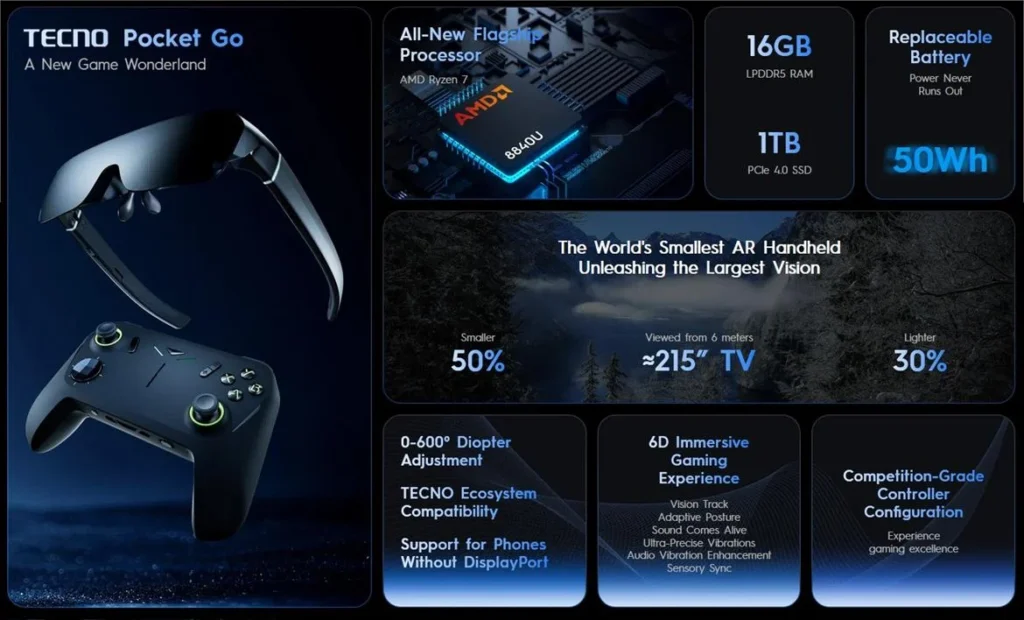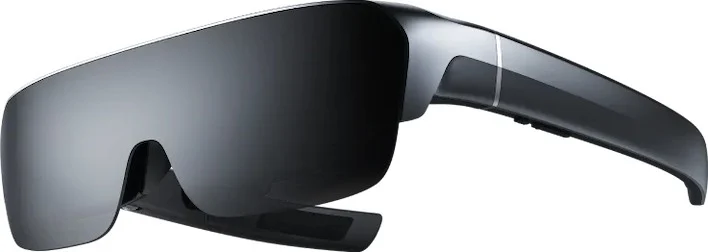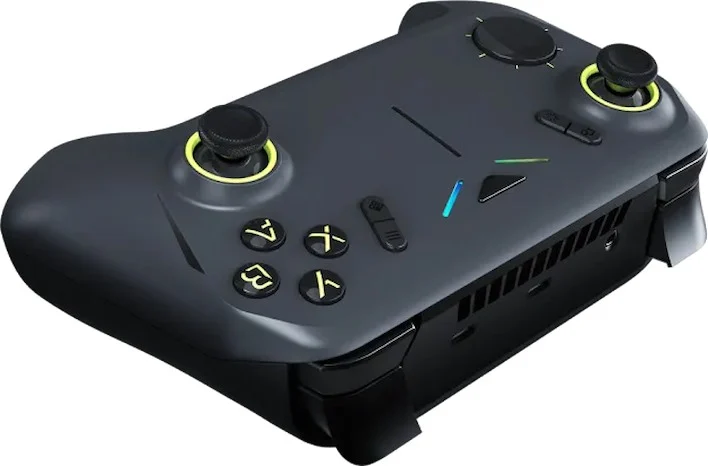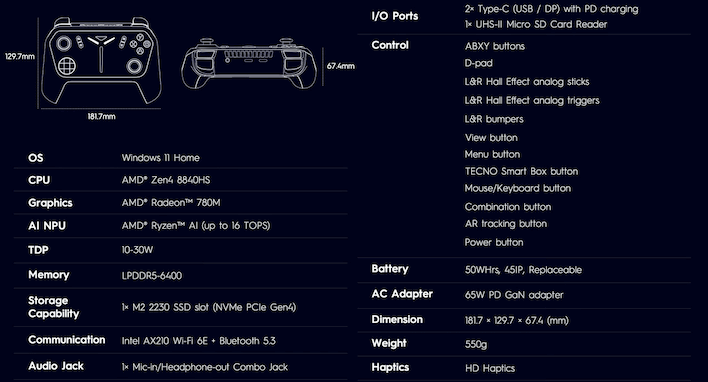Even within the niche of PC-based gaming handhelds, there are quite a few systems to choose from. We’ve written about them a lot, and reviewed a few. If you’re trying to sell such a device, you might try to add extra features above and beyond what the competition offers, like the GPD Duo that comes with dual OLED screens built-in.
Alternatively, you could go the other way and remove standard features. While initially counterintuitive, it certainly makes devices like the Tecno Mobile Pocket Go memorable. The key feature missing from the Pocket Go is a built-in display; if you want to use this thing, you’ll have to connect it to a screen of some kind.

Tecno (stylized TECNO) recommends its own AI glasses for use with the device, known as the “AR Pocket Vision.” This is a pair of lightweight glasses that feature dual 1080p Micro-OLED screens. They include gyroscopic motion tracking, but they don’t support high refresh rates (above 60 Hz), so they’re absolutely not suited for virtual reality. They could be quite serviceable as a simple head-mounted display, though.

The Pocket Go PC handheld is arguably the more interesting half of the package anyway. Despite being only a little larger than a typical console gamepad like a Sony Dualsense, it’s a full-on AMD Ryzen 7 8840HS portable PC. That chip has eight Zen 4 CPU cores and a twelve-CU RDNA 3 GPU; if that configuration sounds familiar, that’s because this is fundamentally the same silicon you’ll find in the Ryzen Z1 Extreme chip that powers the Lenovo Legion Go and both ASUS ROG Ally systems.

Tecno’s little handheld comes with cooling sufficient to run the chip at 30W, same as the ROG Ally, and it has either 16 or 32GB of LPDDR5 memory running at 6400 MT/s. That’s a little disappointing; it’s simply going to perform slightly worse than the Lenovo Legion Go or the ROG Ally X and their faster memory, especially on the Pocket Vision’s 1080p screens. It should still do fine for thousands upon thousands of games, though.

There are some pretty notable features on the Pocket Go, too. The thing that excites us the most is the removable 50-Whr battery. While 50 watt-hours isn’t particularly exceptional in terms of capacity, the fact that it’s external and easily replaceable means that you could quickly plug in the charger, swap batteries without even closing your game, and then disconnect the charger and keep playing. Very cool feature.

You also get Wi-Fi 6E and Bluetooth 5.3 courtesy of an Intel AX210 chipset, and a 65W GaN charger is included in the box. It also has an integrated microphone, a MicroSD slot, and all of the gamepad inputs you’d expect from such a device with fancy Hall-effect sensors for the sticks and triggers. Like the ROG Ally X, it has dual USB Type-C ports, although it’s not clear what speed they are.
If you’re interested in grabbing a Tecno Pocket Go, the AR Pocket Vision, or both, you’ll have to head over to the Kickstarter page for the project. The company’s launch campaign is still ongoing as of this writing, and you can pick up the basic Pocket Go system with 512GB of storage and 16GB of RAM for $539, or the AR Pocket Vision glasses for $349. The fancier Pocket Go with 1TB and 32GB is $699, or you can bundle either system with the glasses for $869 (16GB RAM) or $1049 (32GB RAM).
